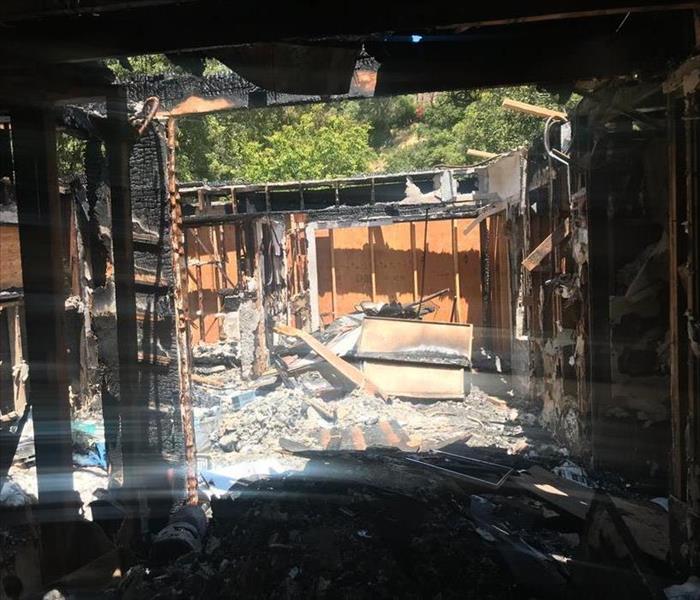Keep Your Home Safe From a Fire
8/5/2021 (Permalink)
Fire season is upon us and there are some things you can do to minimize damage to your property. Here are five tips to fireproof your home:
- Apply fire-retardant chemicals: You can use eco-friendly fire-retardant sprays that can be applied to at-risk areas that are most prone to fire in your home. They are a great line of defense and decrease the ability of materials to ignite. The chemicals in the fire retardant are applied to materials to create a barrier or slow the growth of the fire.
- Get rid of Vegetation: Make sure there is no dry or dead vegetation around your home because it causes the highest risk. Be sure to prune highly flammable shrubberies that are dry. The Federal Emergency Management Agency (FEMA) recommends creating at least 30 feet of defensible space between your home and surrounding vegetation to reduce the potential for damage.
- Limit roof combustibility: Complex roofs with a lot of ridges are more prone to fire because wind can cause embers to get caught on the ridges and valleys. A safer option would be to consider replacing your roofing with fireproof material and applying fire retardant chemicals. Cleaning out debris such as leaves and pine needles is helpful along with checking for broken shingles then replacing them to reduce your home catching fire.
- Keep your gutters clean: It’s important to clean your gutters because they can accumulate vegetation and other debris when it’s windy. Then the debris in your gutters is more likely to catch fire when the season is dry. Removing the debris regularly can help reduce fire risk.
- Focus on protecting your windows: Older windows may consist of a single pane of glass. Newer windows are “dual-pane” or “multi-pane.” In general, dual- or multi-pane windows are better choices from both a wildfire resistance and energy efficiency perspective. Window failure can occur if the glass in the window breaks, allowing embers and flames to enter the building, or the combustible frame ignites and the fire is able to move into the occupied space. The most vulnerable window during a wildfire is one that is left open.






 24/7 Emergency Service
24/7 Emergency Service
